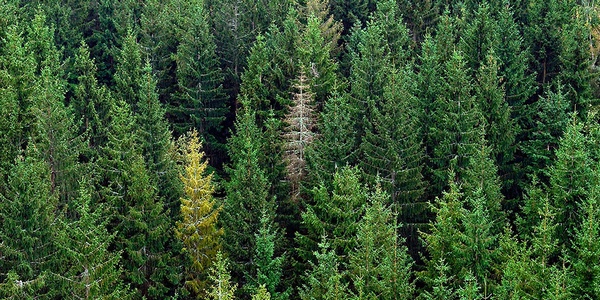The heatwave of summer 2018 was exceptional and that can be hard on trees but it was an opportunity for researchers at the University of Basel to closely study the reaction of trees to this weather phenomenon. In 2018, the Norway spruce suffered most as a result of the drought. It is the most important conifer both in Switzerland and in central Europe. The results of the study are representative of northern Switzerland as a whole, and can also be applied to other conifer species.
The research group led by Professor Ansgar Kahmen had already set up a research area in the Basel-Landschaft municipality of Hölstein the previous year. Their aim was to study the tree canopy 30 meters above ground using a crane to determine how native tree species such as the Norway spruce respond to climate change.

Picture: Shutterstock
As part of their study, the researchers studied 10 randomly selected Norway spruces, all more than 100 years old and about 30 meters tall, in order to measure the seasonal fluctuations in the water balance in the canopy.
With its flat root system, the Norway spruce is particularly susceptible to collapse.
Death is extremely sudden
That hydraulic system also collapses extremely quickly. The researchers assume that this critical point is reached when a large proportion of the roots in the drying soil lose contact with the soil moisture. It's a nonlinear process, just like the breaking of a tree branch, where it gives until it snaps. In this case, the system of water uptake and transport failing was in the space of just a few days.
The new results diverge from the previous mortality threshold values identified in the lab, which means that the hydraulic system of a tree collapses much sooner than previously thought. This happens because dehydration does not progress linearly and the tree cannot recover from the hydraulic collapse, and dies as a result.




Comments